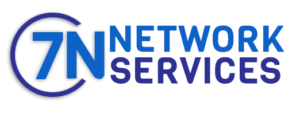Are You Prepared For The Future Of Social Learning?
August 10, 2020 2022-03-08 12:26Are You Prepared For The Future Of Social Learning?
Are You Prepared For The Future Of Social Learning?
Social Learning: A Way of Life
With the Internet exploding with information resources and tools for learning, teachers can be facilitators of information with a greater emphasis on explanation and critical thinking as opposed to the dissemination source. Formal learning systems have in some cases been slower to adopt this model, rightfully concerned with the accuracy of material and consistency; yet with ever-increasing numbers of individuals accessing information in learning environments, the necessity of these formal systems to adopt technological change is very clear.
Where once a rote chapter on the Renaissance movement devolved into students losing interest and ultimately forgetting the lesson, now augmented reality technology enables learners to have an immersive ‘experience’ of the Renaissance era. For the current generation of ‘digital natives’ who start using tablets and smartphones even before they can talk, social learning is not an alternative but an inherent way of life. The challenge becomes how to ingrain the knowledge of the teacher, their skills, and efficacy in explanation into the almost infinite expanse of knowledge that students get through shared Facebook posts, Twitter links, YouTube videos, Quora threads, or any number of constantly emerging and growing online resources.
Considered from this angle the challenge is really an opportunity to merge the ubiquity and deep capacity of information present in these platforms with the inspiration and commitment of teachers to students constantly improving and dedicated to advanced learning. Social learning is already proving to be not just an alternative system, but the growing norm and tool that will shape the education of tomorrow.
Is your Learning Management System (‘LMS’) Social Learning Friendly?
Due to the multiple access points of information, students need less direction to find a particular piece of knowledge. What students do need is a secure and structured environment where they can use the resources of their choice (including text, audio, and/or video) to discuss, communicate, and collaborate. Learning can then be more engaging and interactive. While learning platforms have long been integral to school and college education, in some cases existing tools and systems have not kept pace with the rapidity of technological and innovative change to deliver a truly collaborative learning experience. In many cases Learning Management Systems (LMS) are either restricted to automating formal learning or only add in a few social media tools to round off their delivery model.
An LMS is fundamentally a framework by which students and teachers can integrate their learning on a unified system. Because of the diversity of source material, educators and students need a secure platform that allows them to work on shared documents, make and exchange notes, start live chats and conference calls, or start a discussion thread with fellow students. The differentiators from a traditional approach include flexibility, reach, scope, and scale that allows students and instructors the freedom to engage and explore the material on their terms. With the vast amount of content available, coupled with the diversity of platform delivery options, the importance of a structured system to provide seamless integration offers a knowledge advantage.
This single-point secure encrypted environment prevents any possibility of the content getting leaked or any copyright violations. Additionally, from a learning perspective, benefits to the students and teacher include multiple device access, remote learning, testing, and assessment fluidity and comprehension advancement leading to higher-level offerings.
Technology is increasingly embedded in the work/life equation, now educators and learners need a smart platform, commensurate with intelligent technology, which saves every interaction with the context of the topic, section, notes, and other reference materials along with a date and time stamp, creating a robust content archive, allowing for access at any time.
Tools like Skype, Google Drive, OneNote, OneDrive, Zoom, and others are some of the most widely used channels to share content, communicate, and work together. Integrating these cloud technologies with learning management systems is critical for making a digital education platform truly social, interactive, and value-driven. For students and teachers relying on multiple tools to share and access different forms of content or different channels, difficulties, and complexities arise that can burden the learning process. A unified interface that drives all activities is far superior for making social learning integral to digital education.
Content gamification is yet another vital aspect of social learning. As educators, it is important to have an LMS (here are a few LMS Design Tips) that goes beyond the standard leader boards, point, or level system. Number games, word puzzles, and even inter-team quiz contests after the end of every chapter or section can truly get the ball rolling, leading to more learners participating, working in groups, and getting more engaged.
Students of today are the workforce of tomorrow. Future workplaces are all about using modern tools of communication and collaboration to work in virtual teams spread across locations. Thus, social learning at an early age is now essential to create a future-ready skilled workforce that is adept at self-organized learning, knowledge sharing, and working seamlessly with teams.






